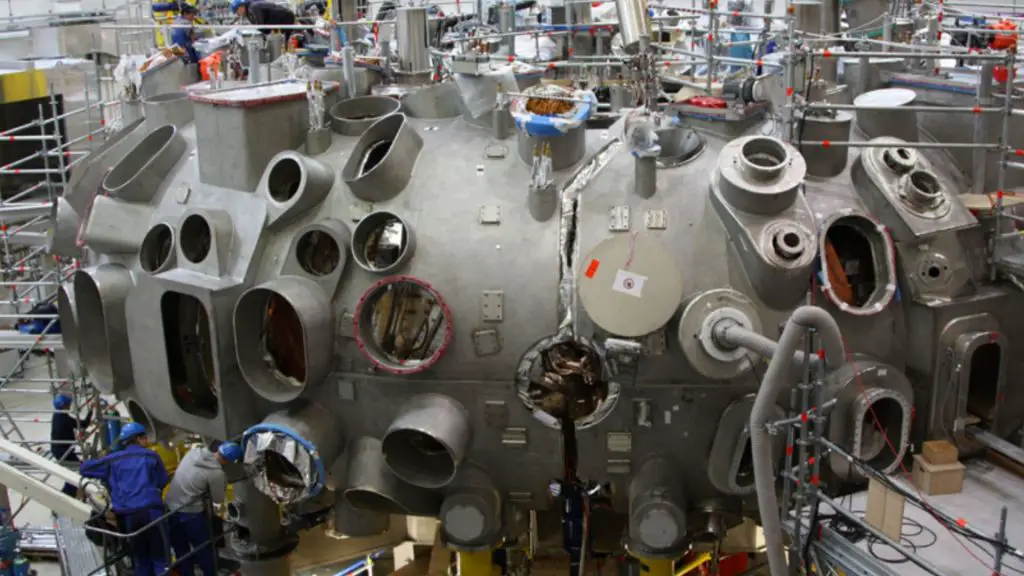Thales, a leading firm in advanced technologies worldwide, has made a big leap in the field of nuclear fusion.
In collaboration with researchers from the Max Planck Institute for Plasma Physics, Thales has announced achieving a “world record” in the nuclear fusion sphere with their TH1507U gyrotron, a high-powered device designed to heat the plasma.
“Thales’s TH1507U gyrotron has achieved a significant milestone by reaching a total output of 1.3 megawatts in radiofrequency at a frequency of 140 gigahertz for 360 seconds,” highlighted the company in a press release. This breakthrough occurred at the Wendelstein 7-X stellarator in Germany.
Achieving nuclear fusion on Earth
In recent years, nuclear fusion has emerged as a promising solution to the world’s growing energy needs. It involves merging light atomic nuclei, like hydrogen, to form a heavier nucleus, such as helium.
This process releases high amounts of energy. To achieve nuclear fusion, scientists first need to create a plasma, which is a superheated state of matter where electrons are stripped from atoms.
This plasma needs to be heated to incredibly high temperatures and confined within a powerful magnetic field.
“The most advanced form of fusion research is that of magnetic confinement of a plasma at several million degrees Celsius – known as “magnetic fusion,” said the Max Planck Institute for Plasma Physics.
Challenge of creating magnetic fusion devices
Stellarators and tokamaks are the two main types of magnetic confinement devices. While tokamaks have made significant progress, they require a complex system of currents to maintain the plasma.
“However, this current can destabilize the plasma, which could cause damage to the reactor,” added the institute. “Furthermore, because this current must be switched off at regular intervals, the fusion power output would pause for a short time.”
Stellarators, on the other hand, can operate continuously without a current drive. This inherent stability provides a significant advantage in the long run.
However, stellarators still need to demonstrate that they can confine the plasma as effectively as tokamaks in experimental settings.
The Wendelstein 7-X, located in Greifswald, Germany, is the world’s largest stellarator. It is a sophisticated device designed to confine and study plasma.
Thales’ gyrotron could be game-changer
Wendelstein 7-X uses a complex system of external coils to create a twisted magnetic field that holds the plasma in place. This is where Thales’ latest achievement becomes highly significant.
“Thales’s gyrotron plays a crucial role in the Wendelstein 7-X stellarator project by providing heating and stabilization of the plasma, which are essential for reaching the temperatures required for magnetic confinement nuclear fusion,” remarked the press release.
Notably, Thales is the only European manufacturer of “Gyrotron” electronic tubes.
“These high-power vacuum tubes are used to heat plasma to temperatures ten times greater than that of the sun’s core. This equipment is essential for initiating nuclear fusion reactions through magnetic confinement,” explained Thales.
The recent milestone achieved by Thales’s gyrotron is a significant boost for the Wendelstein 7-X project.
“The world record set by our Gyrotron marks a significant milestone in the race for fusion,” concluded Charles-Antoine Goffin, Vice President of Microwave & Imaging Sub-Systems at Thales.


Leave a Comment